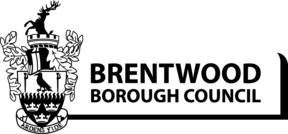The need for planning permission and/or constraints on development within the Borough may be affected by one or more specific designations/constraints which are listed below.
Additionally, we offer a pre-application service which aims to assist you in identifying possible constraints and solutions. Details can be found in the pre-application advice service section.
Flood risk
Flood plains are areas of low-lying land adjacent to a water course that are liable to flood under certain conditions. Functional flood plains are the unobstructed or active areas where water regularly flows in the time of flood. The Environment Agency provides indicative flood plain maps to each local authority, indicating the flood risk areas. The Environment Agency also advises on the issue of flood risk in the determination of planning applications (see Policy IR7 of the adopted Replacement Local Plan). The indicative flood zones are also shown on the paper copies of the Local Plan Proposals Map.
Contaminated land
Contaminated land can occur as a result of previous commercial uses or pollution incidents and may represent harm to human health and the environment. The need for decontamination of land prior to the implementation of development proposals is a material consideration in the determination of applications for planning permission. Further advice is set out on the contaminated land web page.
Conservation areas
Some parts of the Borough are of significant townscape value worthy of special protection. These areas are usually characterised by groups of buildings of particular architectural or historic interest, the spaces between them, and their general setting and character. Designation of such areas as Conservation Areas provides additional statutory powers, for example, to control the demolition of buildings and prevent the loss of trees. The design of new development will be carefully controlled to protect and preserve the character of these areas.
View a list of the Borough's conservation areas. The boundaries of the conservation areas are shown on the Replacement Local Plan Proposals Maps and further policy advice is set out in Policy C14.
Listed buildings
Buildings of Special Architectural or Historic Interest (Listed Buildings) are included in a list compiled by the Secretary of State. It is essential that buildings that have been listed are preserved and safeguarded from physical damage and unsympathetic change. Works such as demolition, alterations (both internal and external) or extensions that would affect its character as a building of special architectural or historic interest will require Listed Building Consent (in addition to possible planning permission).
Information and how to search for a listed building is available on the Listed Building web page.
Article 4 directions
The Town and Country Planning (General Permitted Development) Order 1995 allows for certain forms of development to be carried out without requiring planning permission i.e. 'permitted development'. Such development is generally considered not to give rise to any loss of amenity or any other cause for concern. However, occasions may arise when this may not be considered to be the case, and therefore the GPDO, under Article 4, allows for a local planning authority to seek the Secretary of State's approval to withdraw permitted development rights.
The boundary of the Article 4 Direction areas within the Borough are shown on the Replacement Local Plan Proposals Map and further information is available from Planning Services.
Tree Preservation Orders
Individual trees, groups of trees or woodlands, which are of amenity value, will be protected by Tree Preservation Orders (TPO) to ensure their retention. Permission is required to carry out works to a preserved tree unless it is dying, dead or dangerous. Works to uproot, fell, lop or top a preserved tree will only be granted consent where there is a specific arboricultural justification or other very special circumstances (see policies C6 and C7 in the Replacement Local Plan).
